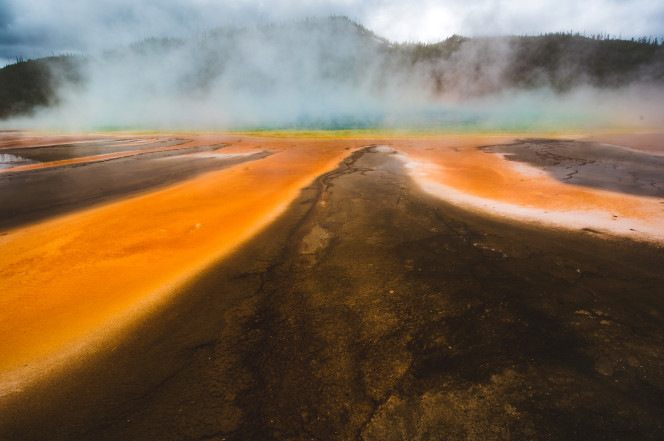Researchers, who were studying and analyzing the supervolcano present beneath the Yellowstone National Park, have revealed that the supervolcano could blow much faster sooner than previously expected and its early eruption could wipe out life on Earth.
According to the National Geographic, the researchers Hannah Shamloo and Christy Till of the Arizona State University analyzed the minerals present in the fossilized ash of the most recent supervolcanic eruption that took place roughly 630,000 years ago. They discovered that the supervolcano evolved after fresh magma flowed into the caldera. Also, another report informed that another eruption occurred about 1.3 million years ago which indicates that both the mega-volcanoes had almost the same time frame of the eruption.
But one thing that surprised them was that the changes in temperature and composition of the supervolcano only took a few decades to build up, which is much faster than the centuries previously thought. Till said in an interview that they expected that there might be processes happening over thousands of years preceding the eruption.
From the research, the scientists found out that the Yellowstone supervolcano, it erupts, can belch out 1,000 cubic kilometers of rock and ash, that is 2,500 times more than that of the Mount St. Helens, which erupted in 1980. And this could create havoc across the US and could cover most of the US in ash, and along with that, the entire Earth will be plunged into a volcanic winter. A 2011 study related to Yellowstone supervolcano, revealed that the ground above the magma reservoir had bulged by about 10 inches in seven years. At that time, volcano expert Bob Smith, from the University of Utah said that it was an extraordinary uplift because it covered a very large area and the rates were very high. And a 2013 study reported that the magma reservoir that feeds the supervolcano is about two and a half times larger than previous estimates.
In June, almost 400 earthquakes hit the Yellowstone supervolcano, but researchers said that it was not a case of worry. But still. More and more research needs to be done on the supervolcano to reach a definite conclusion, and as a result, we could save our Earth from possible devastation.
